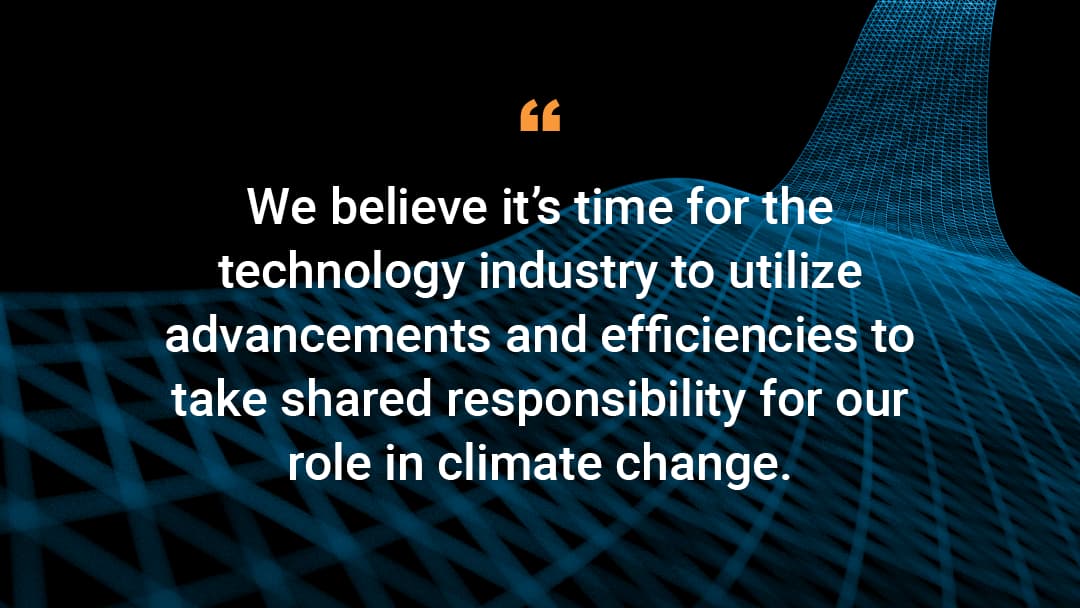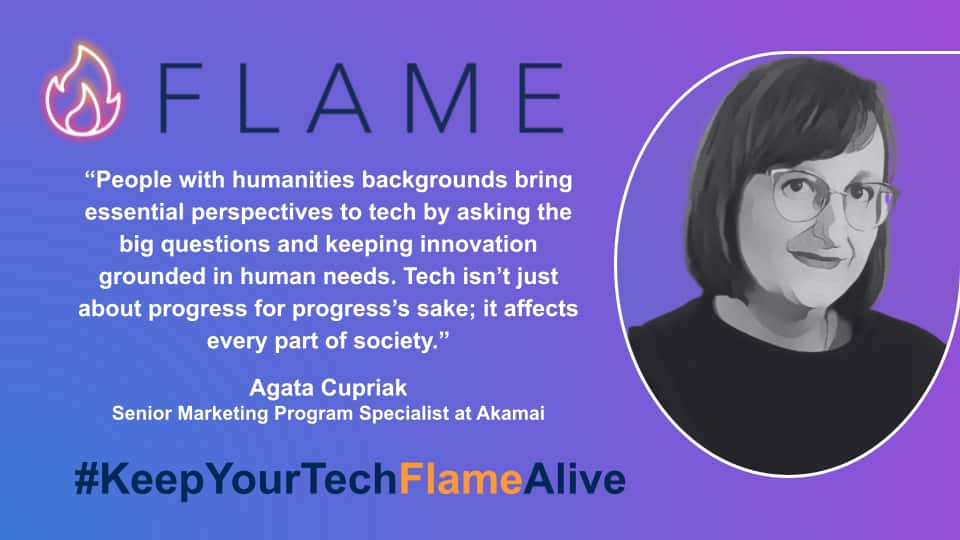Announcing Akamai's 2030 Sustainability Goals

There are 4.66 billion (yes, with a B) internet users. Rough math will tell us that's three in every five people around the world -- talk about lessening the six degrees. I see head nods and shoulder shrugs. 4.66 billion people? Ehh, that number feels a bit low, especially given the pervasive role the internet has in our lives today.
Let's contextualize that number for a moment. Our reliance on the internet has evolved over 20 years, from a higher education luxury (and wartime necessity) to an integral part of everyday life. The impacts of this evolution are huge. The job market is different; the stock market is different; we communicate, learn, and shop differently; and, hell, even sleep differently as a direct result of the internet.
A lesser discussed impact of the internet is the environmental consequence: It is estimated that one-fifth of the world's electricity will be needed to power communications technology by 2025. Communications technology refers to the server farms and telecommunications infrastructure we rely on as the building blocks and formative part of our collective internet obsession.
The energy needed to power these technologies is responsible for about 2% of global greenhouse gas (GHG) emissions. That's more than the airline industry as a whole.
Here at Akamai, we believe it's time for the technology industry to utilize advancements and efficiencies to take shared responsibility for our role in climate change. Our five new goals are expected to be reached by 2030 and are aimed at furthering the impact of our sustainability commitments in three areas of our business activity: the Akamai edge platform; the communities in which we live, work and operate; and our global supply chain.
By 2030, Akamai commits to five goals to lessen and mitigate our impacts on the environment, as mentioned in our recent press release. We plan to:
Source 100% renewable energy to power our global operations
Build a 50% more energy-efficient Akamai platform
Mitigate 100% of our platform emissions
Engage with our top suppliers to baseline and quantify certain GHG emissions known as scope 3 emissions, with a goal toward a measurable reduction by 2030
Continue to recycle 100% of our eWaste.
In this blog, I will explain the benefits of these decisions, why we chose them in the first place, and our projected outcomes.
50% more efficient edge
The Akamai Edge is everywhere -- and I mean everywhere. This is important because it brings data closer to the end user and makes it instantaneously available with edge computing. My colleague, Ari Weil, Vice President of Product Marketing here at Akamai, says it best: "Edge computing brings data, insights, and decision making closer to the things that act upon them -- the edge is as near to the 'thing' as possible."
Making good on our promises for a secure and performant website for thousands of the world's largest banks, retailers, media companies, and government agencies is no easy feat and requires a lot of power.
Not only is power a valuable resource, but it is also usually carbon intensive. We strive to run our network as efficiently as possible, to be mindful of our power usage, and to minimize the negative environmental impacts of our operations. Furthermore, when our customers use our existing infrastructure, we enable them to avoid building their own infrastructure and data centers, all of which helps to lower the total environmental impact. That's why we've committed to making our network 50% more efficient by 2030.
When we say more efficient, we mean less energy intensive. The KPIs we use when measuring this include things like server power utilization, data center power usage effectiveness, and more efficient use of network capacity (less power used to serve and secure traffic). We will measure our 50% goal against current capacity totals.
We achieve these efficiencies in two ways: through hardware improvements and software improvements.
Our hardware improvements include building more resilient, innovative, and power efficient servers. Resilient hardware is designed to withstand higher temperatures and reduce the energy needed to cool. By running our servers even a few degrees hotter than usual, we have the ability to save enormous amounts of energy.
Our software is designed to make more efficient use of our hardware. We streamline and parallelize the work whenever we can, only using the necessary servers when delivering and securing traffic.
Making our network more efficient is the first (and most logical) step in greening our operations. It's most logical because once we know that our network is running as lean as possible, we know where to focus and prioritize our emissions mitigation efforts until we reach net zero emissions by 2030. And, of course, a more efficient network also benefits our cost of goods sold savings initiatives, which is good news to hear for our stockholders.
100% renewable energy
Our proximity to end users means our distributed network relies on energy sources from the nooks and crannies of the world, where renewable energy isn't reliable or readily accessible. This is what makes any renewable energy promise from Akamai challenging.
But it doesn't deter us. That's why we've committed to prioritizing the sourcing of 100% renewable energy to power our global operations by 2030. We will act on this goal in two ways.
First, we will continue to invest in net-new renewable energy. This is purchaser-caused renewable energy, so we get meaningful renewable energy credits to attribute to our operations. Where we can't source purchaser-caused renewable energy (think: with our own projects), we will procure renewable power as close to our operations as possible through meaningful utility and supplier options and traceable renewable energy certificates, like Green-e certification. The best examples of this work are our three existing renewable projects: a wind farm in Texas , a solar array in Virginia, and a wind farm in Illinois. And we are excited for our most recent wind project in Texas to come online soon.
Second, we plan to continue to work closely with our data center partners to pass through renewable energy to power our operations with them. Since the majority of our network deployment is through data center partners, this has had quite an impact. In fact, we know that renewable energy procurement is hard, so we offer training for our data center partners to make its procurement easier. We've collaborated with the Renewable Energy Buyers Alliance to develop a training program for data center and real estate owners to understand renewable energy and help them procure it.
Mitigate 100% of our platform emissions
This is the part I am most excited about: The fruition of this hard work to be lean, mean, and green is to have net zero emissions by 2030.
The creation of a net zero Akamai edge platform requires working with data center providers and landlords to provide attestable sources of renewable power equivalent to the Akamai footprint. When this is not possible, we plan to reduce absolute emissions through the use of credible GHG offsets offered by accredited organizations, like the American Carbon Registry and the Climate Action Reserve, or through new and emerging capture technology.
Plainly, our program will seek to fully mitigate all impacts (real and potential) from our operations, using net-new renewable energy from meaningful sources, such as PPAs, VPPAs, GOs, and attestations and in year-generated renewable energy credits. An important caveat is that we will only use traceable sources of carbon offset.
Ultimately, the net zero emission target applies to both our scope 1 and 2 emissions.
The impacts of this decision go beyond Akamai's own emissions footprint. Our goal to not have any impact on the environment allows our customers to breathe a sigh of relief.
We know how important it is for our customers to understand their scope 3 emissions, so we offer our customers emissions insight through a customized scope 3 report. A key consideration for our decision to journey down the path toward net zero carbon emissions is that if we achieve our goal our customers can rest easy knowing that their usage impacts are being mitigated in the most responsible way possible, through thoughtful and meaningful action.
It's one less thing to worry about all the way around.
Responsible supply chain management
Just as we are suppliers to our customers, we also rely on our suppliers to stand with us in sustainable action. We plan to evolve our responsible supply chain program to engage with our top suppliers to baseline and quantify scope 3 emissions with a goal toward a measurable reduction by 2030. Our supply chain philosophy is simple: educate when necessary, contribute where we can, reinforce when possible to ensure we are doing our best, and do our part to help reduce the global GHG footprint.
Continue to recycle 100% of our e-waste
If you've been keeping tabs with our sustainability story, you may be saying, "I thought you already did that? How is this different? What's the deal?!"
And, to that, I say kudos -- a good memory and a healthy dose of skepticism never hurt anyone. At baseline, you're right. We haven't changed this goal much. Primarily because we know that the e-waste problem isn't going away, but also because we discovered a better, even greener way to manage our e-waste.
Today, we ship all our e-waste to certified e-Stewards facilities in the United States. Our servers from around the world are shipped back here to the United States for appropriate processing. While it may not be the greenest process, it allows us to ensure the highest standards: the security of customer data, the effective downstream management of all toxic materials, and legal and responsible exporting.
Over the next decade, we will continue to work to improve our e-waste management process and engage with e-Stewards-certified partners to recycle all of our e-waste responsibly and efficiently.
Why now?
Well, it's Earth Day, is it not? In lieu of a cheesy social media blitz, we thought it best to announce our goals at the pinnacle of a sustainability moment.
All kidding aside, with the close of 2020 so ended the first chapter of our five-year sustainability journey (read about it here). We had arrived at a pivotal moment in time. We could mosey down the path or run down it fast and hard. We decided to run.
We're lucky to have many cheering us on. Our customers, employees, and investors are all there on the sidelines giving us water in small (recyclable) paper cups or holding signs, giving us the encouragement to continue. But, most of all, we are doing it because we know this journey will be good for us, for our customers, and (most important) for the planet.
We all share in the benefits of the internet. It's time we take responsibility for greening it.





